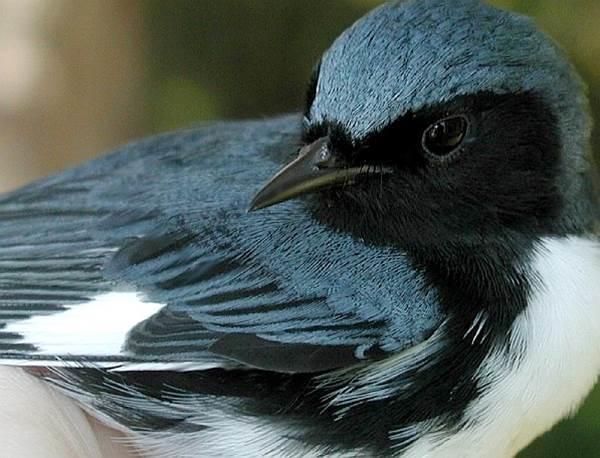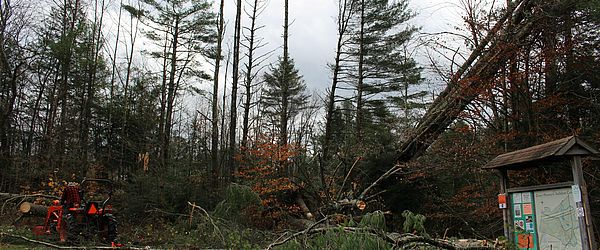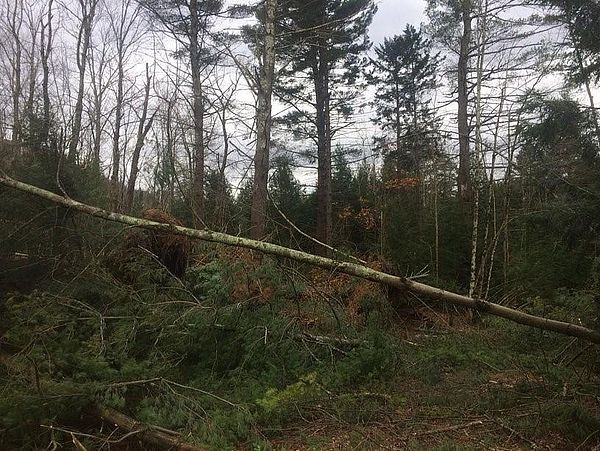As I’m certain most of you are aware by now, the morning of October 30 dawned with a rather grim discovery at the Green Mountain Audubon Center, and it was not a Halloween prank. The wind event that roared through much of Vermont caused significant tree uprooting and breakage at the Audubon Center, causing damage to the main office building and the entire trail network. In the immediacy of the moment it is easy to think of the storm as a devastating event. Although the damage to property is not to be downplayed, the change in the forest that resulted from the wind event also got me thinking about how all of this is going to effect the habitat that birds and other wildlife find there.
It is said that variety is the spice of life. While I presume that this sentiment was intended to apply to humans, the same can certainly be said for birds as well. In the forest there will be more birds from a wider range of species when there is variety: a variety of tree species, variety in height of trees and shrubs, and dead wood on the ground to name a few. Through Audubon Vermont’s forest bird conservation programs we often provide recommendations to landowners as to how they can utilize active forest management to promote this variety of habitat elements. As the wind storm of October 30 reminds us, nature periodically implements its own management practices.
Disturbance Happens
Wind, snow and ice loading, and natural tree mortality are among the most common natural events, also known as disturbances, which influence northern hardwood forests, Wind events that take down a single tree here and there happen quite frequently, particularly when trees are diseased, of low vigor, or are otherwise unhealthy. More moderate disturbances such as blowdowns, microbursts, and ice storms are widespread and occur at roughly 25-year intervals, producing gaps in the canopy of the forest of several trees to 1/4 acre in size. I would put the recent windstorm in this category. Much larger disturbances, such as hurricanes, that take down acres upon acres of trees happen much less frequently, occurring every 500-1,500 years.
As a result of the recent wind storm there is no shortage of woody material on the forest floor. Birds such as the White-throated Sparrow will certainly benefit. Where the canopy overhead has been opened up and sunlight is now able to reach the ground we will expect to see new trees and shrubs start to grow (so long as the deer don’t eat them all but that’s another story!). This provides nesting structure for the Black-throated Blue Warbler. It will be very interesting to observe how the bird community at the Audubon Center responds to this natural disturbance event in the upcoming years. My prediction is that there will be a favorable response.
Past is Prologue
During my nearly 20 years working with Audubon in Vermont the October 2017 wind event was the third moderate forest disturbance at the Green Mountain Audubon Center. I realize that earlier in this article I stated that this type of event happens roughly once every 25 years and yet I’m now saying that it has occurred three times at the Audubon Center in the past 20 years, or once every 7 years! Is there an explanation? I think there is; times are changing. As the climate changes so does the natural disturbance regime. It is anticipated that extreme weather events will not only become more extreme but also more frequent. This type of event will likely happen again in the not too distant future.
Planning for Uncertainty
Will an increase in frequency and intensity of natural disturbance events be good for forests and birds or will it be a detriment? To a large degree it will depend upon our ability as stewards of the land to anticipate and plan for these events. Managing our forests to be resilient and adaptable to the changes that lie ahead is of critical importance. In doing so we can feel confident that we are doing our part to ensure a bright future of our forests and the birds that call them home.
Learn more about Audubon Vermont’s Forest Bird Initiative and forest management recommendations at http://vt.audubon.org/conservation/forest-bird-initiative-why-forest-birds


